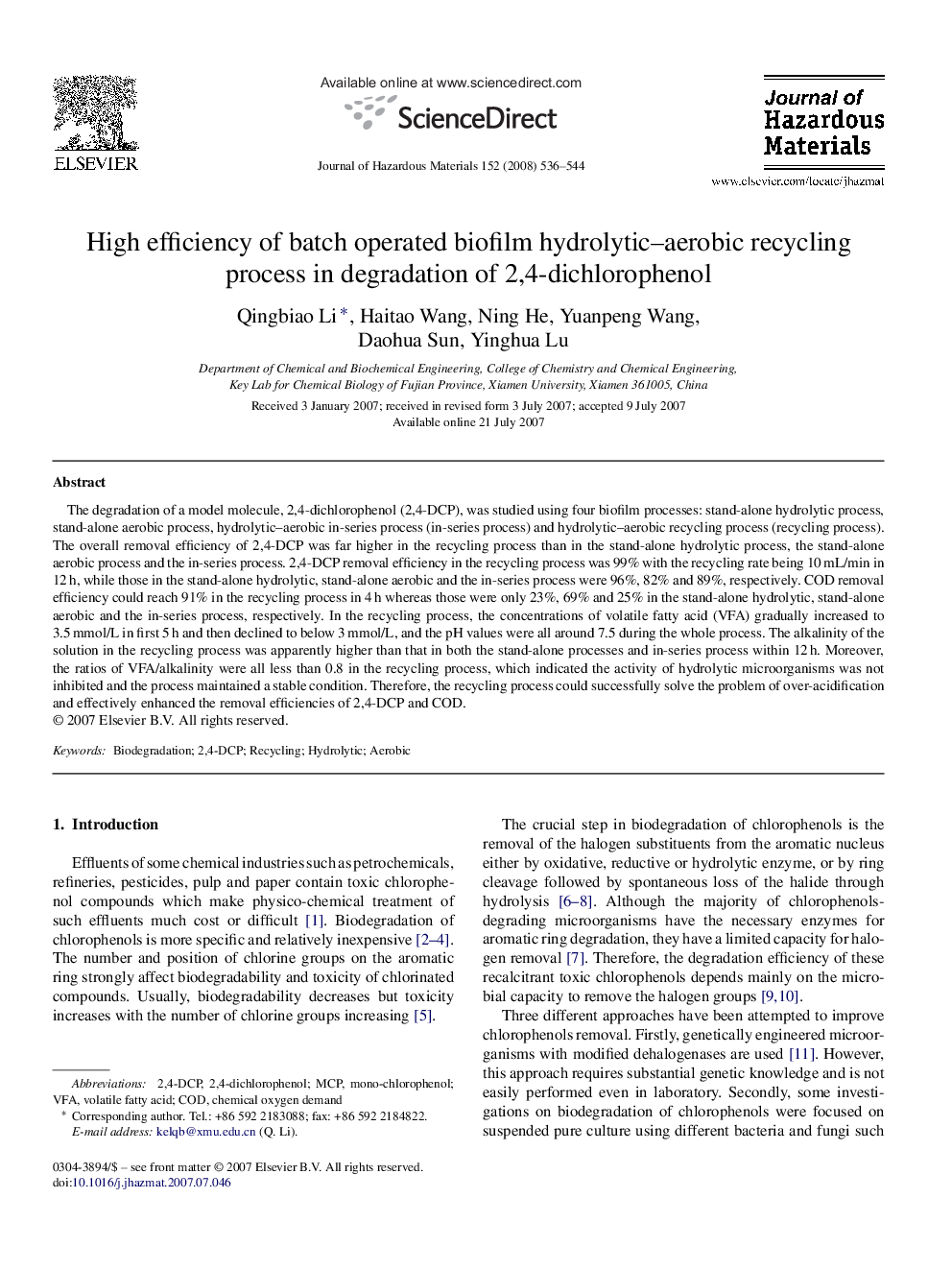| Article ID | Journal | Published Year | Pages | File Type |
|---|---|---|---|---|
| 583348 | Journal of Hazardous Materials | 2008 | 9 Pages |
Abstract
The degradation of a model molecule, 2,4-dichlorophenol (2,4-DCP), was studied using four biofilm processes: stand-alone hydrolytic process, stand-alone aerobic process, hydrolytic-aerobic in-series process (in-series process) and hydrolytic-aerobic recycling process (recycling process). The overall removal efficiency of 2,4-DCP was far higher in the recycling process than in the stand-alone hydrolytic process, the stand-alone aerobic process and the in-series process. 2,4-DCP removal efficiency in the recycling process was 99% with the recycling rate being 10Â mL/min in 12Â h, while those in the stand-alone hydrolytic, stand-alone aerobic and the in-series process were 96%, 82% and 89%, respectively. COD removal efficiency could reach 91% in the recycling process in 4Â h whereas those were only 23%, 69% and 25% in the stand-alone hydrolytic, stand-alone aerobic and the in-series process, respectively. In the recycling process, the concentrations of volatile fatty acid (VFA) gradually increased to 3.5Â mmol/L in first 5Â h and then declined to below 3Â mmol/L, and the pH values were all around 7.5 during the whole process. The alkalinity of the solution in the recycling process was apparently higher than that in both the stand-alone processes and in-series process within 12Â h. Moreover, the ratios of VFA/alkalinity were all less than 0.8 in the recycling process, which indicated the activity of hydrolytic microorganisms was not inhibited and the process maintained a stable condition. Therefore, the recycling process could successfully solve the problem of over-acidification and effectively enhanced the removal efficiencies of 2,4-DCP and COD.
Keywords
Related Topics
Physical Sciences and Engineering
Chemical Engineering
Chemical Health and Safety
Authors
Qingbiao Li, Haitao Wang, Ning He, Yuanpeng Wang, Daohua Sun, Yinghua Lu,
